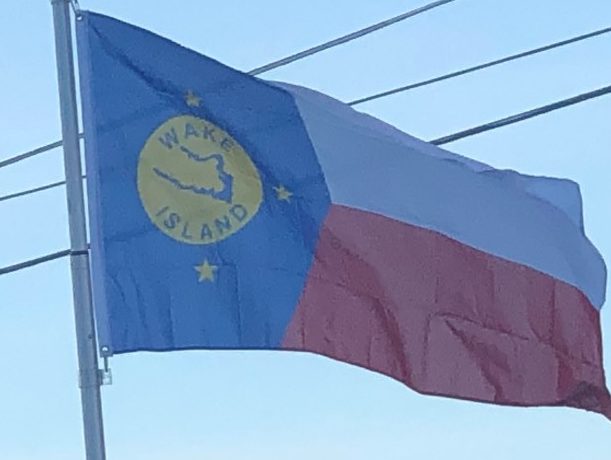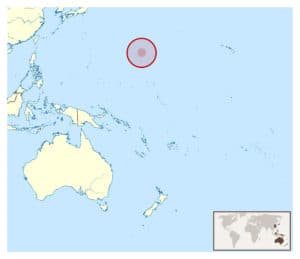
Although Wake is officially called an island in the singular form, it is actually an atoll composed of three islets and a reef surrounding a central lagoon.
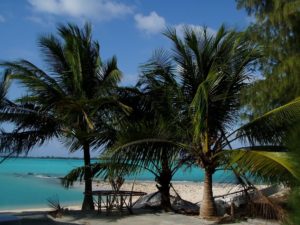
History:
Prehistory:
Indigenous Marshallese oral tradition suggests that before European exploration, nearby Marshall Islanders traveled to what is now Wake Island, which the travelers called Enen-kio after a small orange shrub-flower said to have been found on the atoll.
In the ancient Marshallese religion, rituals surrounding the tattooing of tribal chiefs, called Iroijlaplap, were done using fresh human bones, which required a human sacrifice.
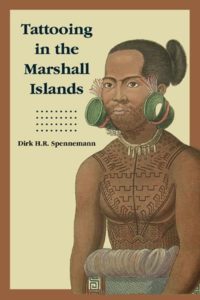
A man could save himself from being sacrificed if he obtained a wing bone from a very large seabird said to have existed on Enen-kio. Small groups would brave traveling to the atoll in hopes of obtaining this bone, saving the life of the potential human sacrifice. No archaeological evidence has been found to suggest that there was ever a permanent or temporary settlement by Marshall Islanders on Wake Island.
Early European Contact:
Wake Island was first encountered by Europeans on October 2, 1568, by Spanish explorer and navigator Álvaro de Mendaña de Neyra. After visiting Tuvalu and the Solomon Islands, the expedition headed north and came upon Wake Island, “a low barren island, judged to be eight leagues in circumference”. Since the date – October 2, 1568 – was the eve of the feast of Saint Francis of Assisi, the captain named the island San Francisco. The ships were in need of water and the crew was suffering from scurvy, but after circling the island it was determined that Wake was waterless and had “not a cocoanut nor a pandanus” and, in fact, “there was nothing on it but sea-birds, and sandy places covered with bushes.”
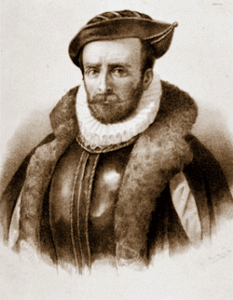
In 1796 Captain Samuel Wake of the British merchant vessel Prince William Henry also came upon Wake Island, naming the atoll for himself. Soon thereafter the 80-ton British fur trading merchant brig Halcyon arrived at Wake and Master Charles William Barkley, unaware of Captain Wake’s earlier and other prior European contact, named the atoll Halcyon Island in honor of his ship.
In 1823 Captain Edward Gardner, while in command of the British Royal Navy’s whaling ship HMS Bellona, visited an island which he judged to be 20–25 miles long. The island was “covered with wood, having a very green and rural appearance”. This report is considered to be another sighting of Wake Island.
United States Exploring Expedition:
On December 20, 1841, the United States Exploring Expedition, commanded by Lt. Charles Wilkes, U.S.N., arrived at Wake on USS Vincennes and sent several boats to survey the island. Wilkes described the atoll as “a low coral one, of triangular form and eight feet above the surface.
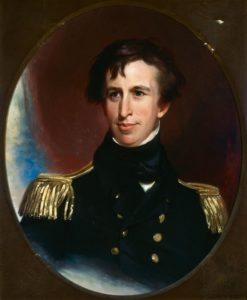
It has a large lagoon in the center, which was well filled with fish of a variety of species among these were some fine mullet.” He also noted that Wake had no fresh water but was covered with shrubs, “the most abundant of which was the tournefortia.” The expedition’s naturalist, Titian Peale, noted that “the only remarkable part in the formation of this island is the enormous blocks of coral which have been thrown up by the violence of the sea.” Peale collected an egg from a short-tailed albatross and added other specimens, including a Polynesian rat, to the natural history collections of the expedition. Wilkes also reported that “from appearances, the island must be at times submerged, or the sea makes a complete breach over it.”
The Wreck and Salvage of Libelle:
Wake Island first received international attention with the wreck of the barque Libelle. On the night of March 4, 1866, the 650-ton iron-hulled Libelle, of Bremen struck the eastern reef of Wake Island during a gale. Following a harrowing journey of 13 days, the longboat reached Guam and the assistance of the Spanish, then in control of the island.
The Wreck of Dashing Wave:
On July 29, 1870, the British tea clipper Dashing Wave, under the command of Captain Henry Vandervord, sailed out of Foochoo, China, en-route to Sydney, Australia.
